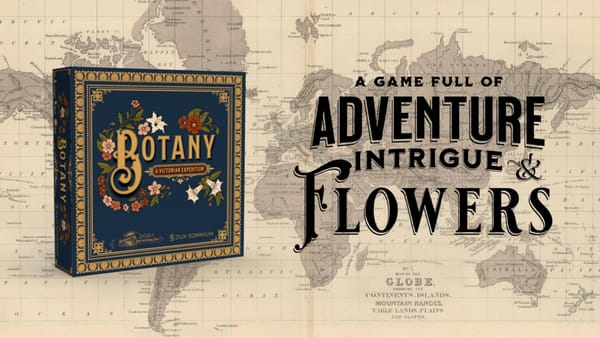The Art of Setting Stretch Goals in Your Tabletop RPG Crowdfunding Campaign

Stretch goals are a popular and effective tool in crowdfunding, but they’re not just about throwing in extra goodies to sweeten the deal for backers. When done right, stretch goals can significantly increase the success of your crowdfunding campaign for your tabletop RPG (TTRPG) while maintaining or enhancing the core integrity of the project. However, improper stretch goals can backfire, leading to disorganization and even frustration among your backers.
In this post, we’ll dive into the art of setting stretch goals, offering practical tips to ensure they enhance your project and keep your backers excited throughout the campaign.
1. Know What Your Core Project Needs
Before you begin considering stretch goals, it’s essential to have a solid understanding of your core project. Stretch goals should support and enhance the base game, rather than distracting from or overwhelming it.
- Focus on Quality, Not Quantity: A successful stretch goal doesn’t just add more content or items. It enhances the player experience or deepens the game’s core mechanics. Consider goals that improve the quality of the game, such as new illustrations, higher-quality production materials, or more detailed rulebooks. This adds value without losing focus on the main objective.
- Identify Areas for Improvement: Before launching your campaign, review your game’s design and production process to identify areas where additional funding could improve the overall quality. Do you need better artwork? More playtesting? Better production values for your miniatures or game components? These are all ideal candidates for stretch goals.
2. Keep Your Stretch Goals Meaningful
Stretch goals should make the game better and more engaging. While it can be tempting to add new, flashy rewards just for the sake of hitting a new milestone, this can lead to “goal fatigue,” where backers stop caring about the goals and become frustrated with the lack of clarity.
- Stay Relevant to Your Game: Every stretch goal should feel like an organic addition to the game. For example, if your RPG involves specific factions or locations, stretch goals could unlock new playable factions, locations, or storylines. If the game is heavily focused on narrative or character development, consider stretch goals that expand on character options or add additional narrative layers.
- Consider Gameplay Features: Add gameplay-related stretch goals that enrich the game mechanics, such as new character classes, expanded lore, unique abilities, or additional campaigns and adventures. These types of stretch goals help players feel like their investment directly impacts the depth and experience of the game.
- Avoid Too Many Add-Ons: The temptation to offer too many stretch goals and add-ons is common, but it’s important to strike a balance. Backers want value, but they also want a clear, focused project. Adding too many unnecessary extras can spread your resources too thin, leading to delays or a lack of focus.
3. Set Realistic Goals
One of the biggest challenges with stretch goals is setting goals that are achievable. Unrealistic stretch goals can backfire, leading to backer disappointment or, in the worst case, the failure of your campaign. Here’s how to keep your goals within reach:
- Start with a Clear Base Goal: Your initial campaign goal should be specific and achievable. Once you hit that goal, you can add the first stretch goal. A good rule of thumb is to aim for a goal that covers your core costs and allows you to improve the game, but don’t overpromise.
- Gradually Increase Goals: Make sure that each stretch goal is a logical extension of the previous one. For example, you could increase the quality of your game components, add more content, or enhance the visual design of the rulebook. But don’t increase the complexity of the game too quickly—keep your backers' expectations aligned with what you can realistically deliver.
- Set Transparent Milestones: Communicate your stretch goals and funding milestones clearly to your backers. Transparency helps build trust, so everyone knows exactly what to expect and when. If you’re adding extra goals as you progress, make sure you explain how these will improve the game and why they’re worth the additional investment.
4. Time Your Stretch Goals Strategically
Timing is everything when it comes to stretch goals. Ideally, you want to keep your backers engaged throughout the campaign while ensuring you have enough time to meet each goal without overwhelming yourself or your production schedule.
- Introduce Stretch Goals Gradually: Instead of unveiling all stretch goals at once, introduce them progressively as your campaign grows. This helps maintain excitement and keeps the momentum going. For example, after you reach your base goal, announce the first stretch goal, then the next one once the previous goal is unlocked.
- Don’t Overwhelm Backers: You don’t want to overwhelm your backers with too many stretch goals right out of the gate. Keep things simple initially and then gradually roll out more goals as you hit key milestones.
- Avoid Rushing to Unlock Goals: Stretch goals should always feel like a reward for backers’ support, not a race. Be careful not to create a sense of urgency that leads to stress or burnout. If your campaign is doing well, take the time to design goals thoughtfully and keep the focus on quality.
5. Keep Backers Engaged Throughout the Campaign
Stretch goals are an excellent way to keep your backers excited and involved in your campaign, but you’ll need to keep them engaged beyond just adding rewards. Here’s how to maintain enthusiasm throughout your crowdfunding journey:
- Engage Backers with Polls and Feedback: Involve your backers by conducting polls or surveys about which stretch goals they’d like to see unlocked. You can even ask for input on new character ideas or campaign settings. This keeps the community involved and gives them a sense of ownership over the game’s development.
- Highlight Milestones and Progress: Regularly update your backers on the campaign’s progress and highlight key milestones. Celebrate unlocking new stretch goals and thank your community for their support. Keeping the energy positive and focused helps maintain excitement.
- Run Social Media Campaigns: Encourage your backers to spread the word about your project on social media by offering rewards for sharing your campaign or tagging friends. Social media campaigns can help you reach new backers and expand your community, making it easier to unlock additional stretch goals.
6. Balance Quality with Quantity
While it’s important to set stretch goals that incentivize backers, they shouldn’t come at the cost of quality. A successful campaign should maintain a balance between offering rewarding stretch goals and keeping the original design’s integrity intact.
- Prioritize Core Features First: Make sure your original game remains the primary focus. Stretch goals should enhance the game without altering its core experience. If you start adding too much extra content or complexity, it can overwhelm the design and shift the focus away from what made your game unique.
- Don’t Stretch Too Thin: Overextending your stretch goals can lead to delays and potential backer dissatisfaction. Focus on goals that are realistic and directly impact the quality of the game. It’s better to hit a few well-thought-out goals than to stretch too thin with dozens of minor rewards that add little value.
Conclusion
Stretch goals are an essential element of crowdfunding for tabletop RPGs. They can excite your community, enhance your game, and build momentum throughout the campaign. However, it’s crucial to balance quality with quantity, stay realistic with your goals, and keep your backers engaged and invested in the process. With the right approach, stretch goals can turn a good campaign into a great one, leaving backers excited for what’s to come.





